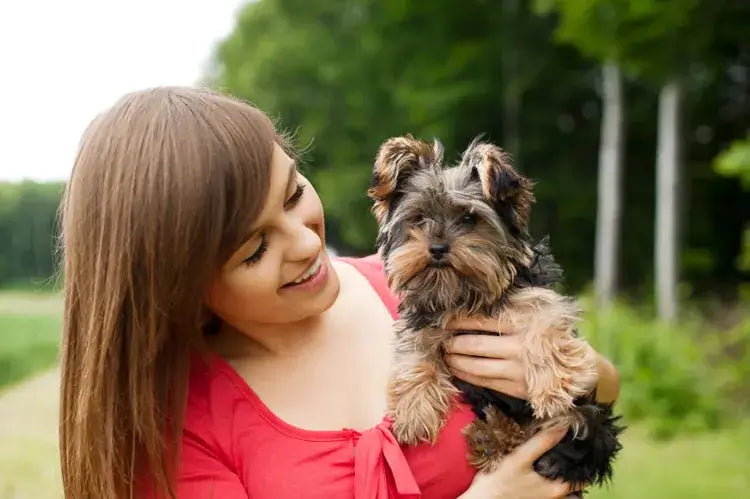
You've got a new puppy, now what's next? Bonding. Like a baby, you need to develop a relationship with this developing creature; let it understand you're a friend and not a foe and establish an unbreakable connection.
Remember that while puppies are adorable, bonding with them won't happen overnight; for this reason, this article presents some practical tips on bonding with your puppy. It's a sure-fire way to make your puppy "man's best friend."
Let's begin!
Importance of creating a bond
The primary reason for having a furry canine in your life is to have a companion to love and adore. The bonding phase is unique as it's the time to connect with your puppy, play with them, and experience the world from their perspective.
Also, the faster you can create a connection with your dog, the easier it'll be to communicate with them, raise them, and find pleasure in each other's company.
How to bond with your young puppy

Dogs tend to develop their mental library based on their positive experience with their environment in the first few months. Therefore, we recommend applying these practical tips to ensure you train a happy and healthy dog.
These include:
-
Communication with Your Puppy
Upon introducing your new dog to its puppy home, learn how to communicate with the canine. Talking with your dog doesn't necessarily mean verbal communication since puppies don't know the human language, but you can use cues, body language, tone, and energy to convey certain concepts.
For example, an excited tone can raise your puppy's energy and motivate them to do the activity you're guiding them towards. On the other hand, if you're more subtle and low-energy, it'll not be apparent since it's similar to your normal conversational voice.
However, a flat and steady voice isn't harmful as it's effective at calming an overly excited puppy or soothing their anxiety. It's like a human, too; loud sounds are alarming and calm ones are non-threatening.
-
Set Boundaries
Setting boundaries is a crucial part of puppy training as it lets them know the rules of the house. It also establishes you as the leader in the relationship, someone they can trust and meet for directions.
New puppy owners often mistake letting their new dog feel too much at home, handing on the furniture, chipping paint, breaking glass tables, and more. Failing to outline the dos and don'ts in your domicile is a recipe for bad behavior.
You can establish boundaries by using a playpen or baby gate to isolate them from specific areas of the house. Also, you may express your disapproval of specific behaviors with your tone, but only when needed.
-
Structure your puppy's life
When a puppy enters your home for the first few weeks, they begin adapting to the environment and its new family. To make this process easier and more beneficial, introduce a daily schedule to add structure to your puppy's life.
Whether potty training, setting boundaries, or physical exercise, building a routine is the fastest way to make your dog feel at home. This method is more soothing since your pup can predict what's next and rest knowing all their needs are met.
Fortunately, bringing structure into their lives isn't complicated since it primarily consists of a potty break, feeding time, playtime, nap time, and maybe some extra puppy training.
*Note: Try matching your dog's schedule with yours so raising the pet isn't inconvenient.
-
Playtime is necessary
Playtime is one of the best ways to fully connect with your beloved puppy and form a strong bond. Some puppies are eager to start playing immediately after arriving at your home.
So, being out the dog treats and have a fun session with your new beloved companion. Also, ensure the games you play are compatible with their size and strength for maximum enjoyment. Some recommendations include fetch, hide and seek, and tug.
The goal is to provide positive reinforcement and stimulate your puppy's brain in establishing you as someone that brings a fun time. As a result, they'll anticipate it will be quality time when you next hang out together.
-
Give them their own place
Pet parents are often eager to begin associating with their new puppy and forget three sensitive animals can be overwhelmed. Introducing them to your home presents them with new scents, sights, sounds, and faces.
To ensure they adjust quickly and feel comfortable creating a bond with you, give them their own dog area and some alone time to process everything. However, don't overdo it to the point they develop separation anxiety.
You can create their own doggy area with a playpen or crate, which separates them from the many inputs their senses receive. Over time, they will feel comfortable leaving their areas and associating with you.
Conclusion

Puppies are delicate beings that require time and patience to train into adulthood. During the growth process, you can follow these tips to create a strong bond with the dog, making them your inseparable companion as time progresses.

